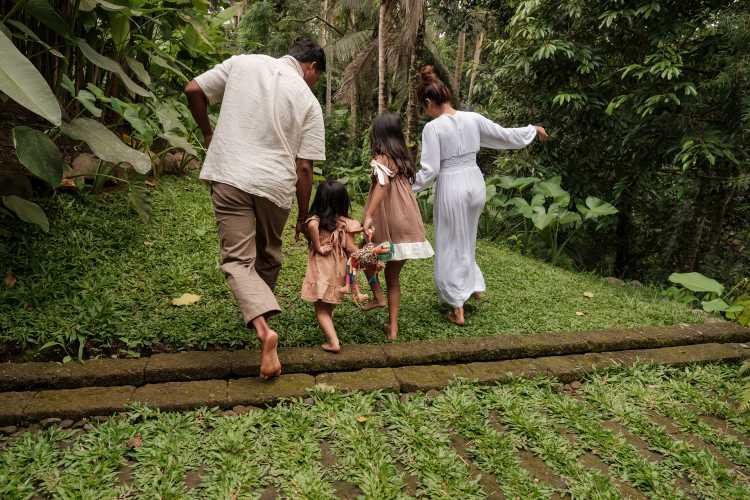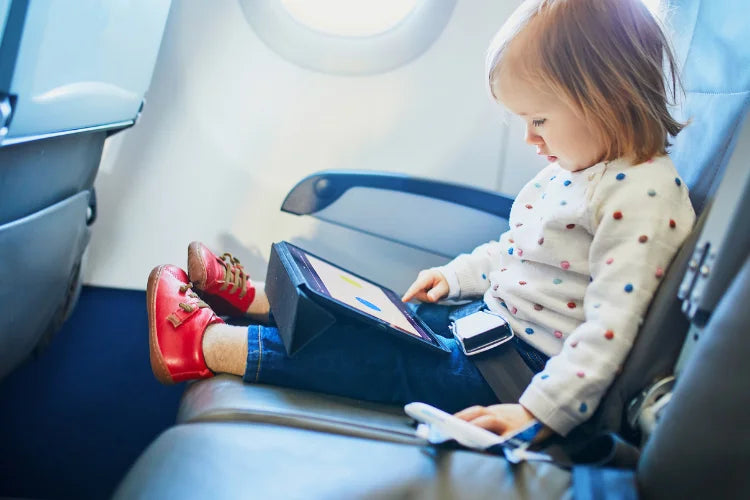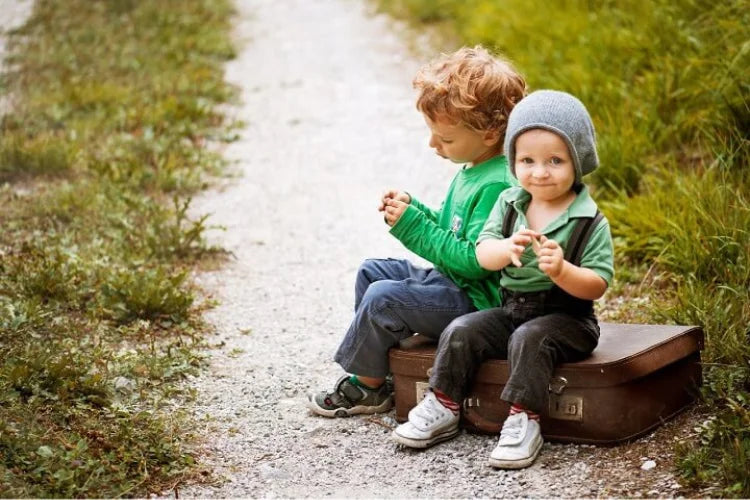The mountains are an increasingly popular destination when traveling with kids (and they should be!), but many people don’t realize that altitude and elevation can impact kids just like it can for adults. Many kids are fine, but some get really sick! What can you do and how can you plan for this?
Below are a few things you need to know before you bring your kids to higher elevation so you can all have an amazing trip. There is a lot to know about traveling to altitude with kids. The following is a modified sample from my upcoming guide on Kids and Altitude!
If you'd like even more tips and information about traveling to the mountains with your kids, as well as info about how to reach out if you need a consultation while in Colorado, sign up to be the first to know when it's available!

How High You are Going Matters
This might seem obvious, but a lot of people underestimate the impact of a few thousand feet of elevation. It can make a big difference whether you are going to Denver (the mile high city) or to Breckenridge (which is about double the altitude of Denver). Even 1,000 ft in elevation change can make the difference between feeling great or struggling for the day.
Why does altitude matter? It’s all about oxygen! To put this into perspective, oxygen makes up approximately 21% of the air we breathe at sea level, but in Denver (5,280 feet) the effective oxygen percentage is 17.3%, and in Breckenridge (9,600 feet) is about 14.3%. That’s a huge difference! If you are thinking about doing a 14er (a mountain above 14,000 ft, such as Pike’s Peak), the number drops to 12.3%. This drop in oxygen makes the body work harder, and causes symptoms such as shortness of breath and decreased capacity for exercise, and these symptoms worsen the higher the altitude.
The actual percentage of oxygen is technically the same, but the partial pressure is lower (“thinner air”) which means that less oxygen is available for each breath.
This change in oxygen availability and the demands it puts on the body can cause what is called AMS (Acute Mountain Sickness). This can be mild, but also can be severe, affecting the lungs (High Altitude Pulmonary Edema) or even causing serious brain swelling (High Altitude Cerebral Edema). The incidence of mountain sickness rises with elevation, and about 75% of people who come from low altitude have at least mild symptoms when they sleep at or above 10,000 ft of elevation. The incidence of mountain sickness is much lower below 8,000 ft, so 2,000 ft can make or break your trip!

Try a Night or Two at Lower Elevation Before Heading to the Mountains
Is this your kid’s first time in the mountains? Try a lower elevation first, or do a day trip and come back down before sleeping at elevation. As a general rule: the higher the elevation, the slower your ascent should be. Flying straight into 6,000 ft of elevation should be fine, but going from sea level to 10,000ft is quite the adjustment!
This kind of abrupt transition into a high altitude destination without any stops along the way can increase the risk of altitude sickness. But sleeping lower and doing a trip up for the day allows you to test the waters and give your kid (and you) time to acclimate! It takes two weeks to fully acclimate, so it’s unlikely that you’ll get there on a trip, but every day and night taken to acclimate decreases the chance of altitude sickness.
Tip: Sleeping at lower elevation makes a bigger difference in altitude sickness than how high you go during the day.

Age Makes a Difference
It’s not a great idea to bring a newborn from sea level to high altitude. Why? It takes a few months for their circulatory system to fully transition from the circulation patterns used in the womb, leaving them more vulnerable to changes related to lower oxygen levels. Altitude stress can also bring to light some medical conditions that weren’t obvious before, and you definitely don’t want to discover those while on vacation with your newborn. Finally, little babies also don’t have as many ways to communicate symptoms of illness, which makes diagnosing sickness (due to altitude or otherwise) more difficult.
Generally, the more they’ve progressed developmentally, the more confident you can be in bringing them with you on your high altitude trip since they will have more ways of telling you they don’t feel well.
To see how altitude can affect babies at different ages, it’s helpful to look at studies done on oxygen levels at elevation. A baby at sea level normally has oxygen levels (oxygen saturations) of 99-100%. A study done in Leadville showed that babies living there had oxygen levels of 88-91% and went as low as 81% for young babies (1-week-old) and 86% for older babies (2 months old).
Some babies born at elevation even need oxygen for a few months until their heart and lungs mature! Those lower oxygen levels make the body work harder to get enough oxygen to their body, but babies don’t always show obvious signs that this is happening!

It’s Important to Have an Exit Plan
Something that many families don’t work into their vacation is a plan for when things go wrong. It’s not fun to think about getting sick and leaving your ski trip, but the best treatment for altitude sickness is decreasing elevation.
Changing location is really inconvenient, and most families do not consider the possibility of mountain sickness ahead of time. What this means is that families who don’t have a backup plan often end up staying too long (until their baby is really sick) and getting a really expensive ambulance ride back to a city with a lower elevation, which is not a great way to spend your time or money!
So do a little research ahead of time and save yourself the last-minute scramble when your baby is fussy or not doing well.
(Bonus!) Be Prepared with the Altitude Guide!
Want a handy calculator to determine if you or your kid has symptoms of mountain sickness? Would you like to know what items you should have on hand to monitor your child more closely and to help their symptoms at altitude? Craving more nerdy details? My guide is a comprehensive look at travel to altitude with kids and can help make your trip smoother and more fun!
Article written by Laura Vanston, DNP (Owner of Inspire Pediatrics, a Colorado-based pediatric healthcare and educational content service)
Resources:
Acute Mountain Sickness: https://pubmed.ncbi.nlm.nih.gov/28582330/Children and Altitude: consensus of the UIAAA: https://www.theuiaa.org/documents/mountainmedicine/UIAA_MedCom_Rec_No_9_Children_at_Altitude_2008_V1-1.pdfChildren in the Mountains: https://www.ncbi.nlm.nih.gov/pmc/articles/PMC1112806/














